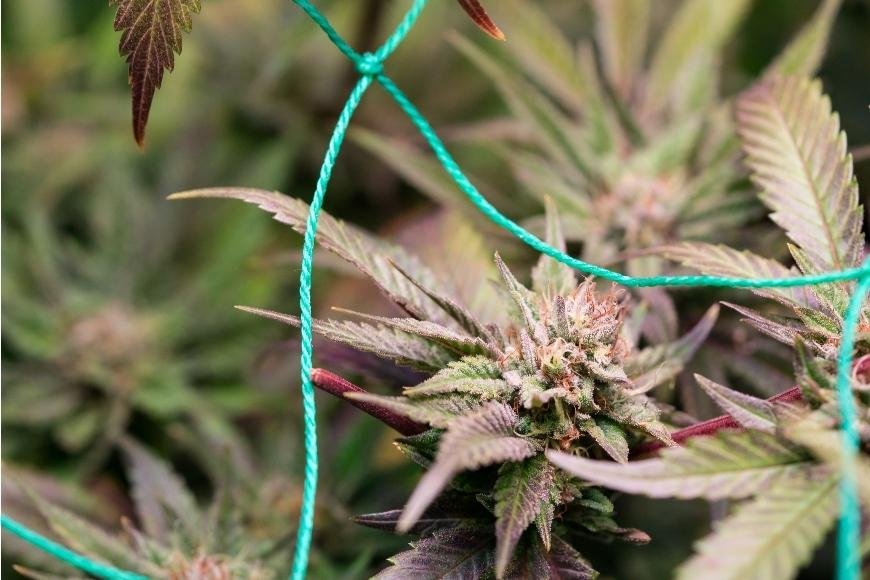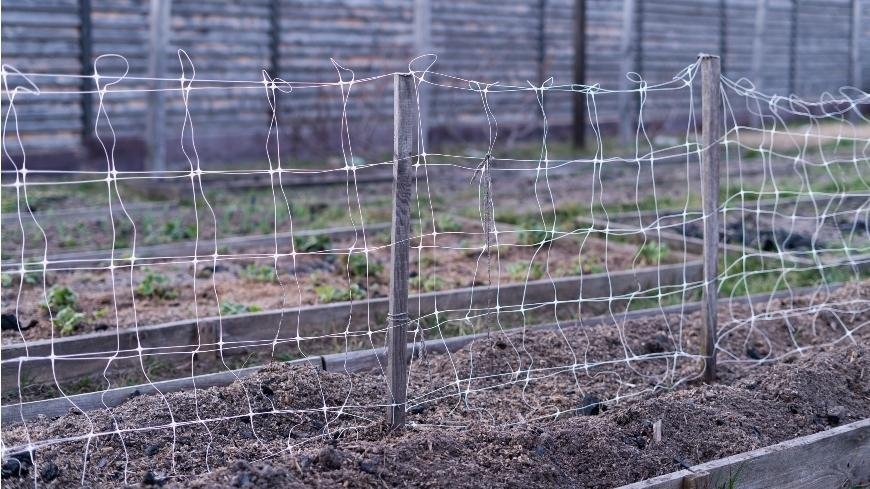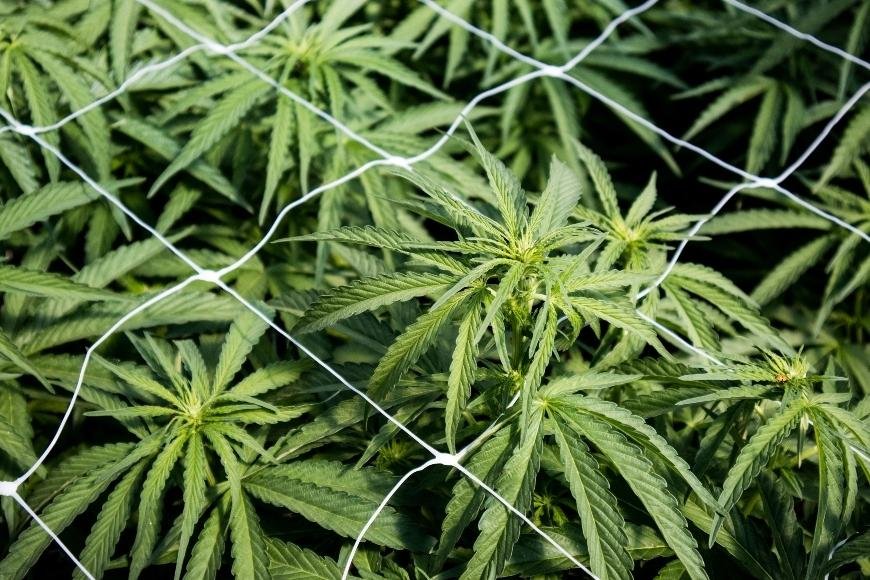Trellising Cannabis Plants: How To
Discover the ultimate guide on Trellising Cannabis Plants: How To maximize yields with various methods, benefits, drawbacks, and step-by-step instructions.

When it comes to growing cannabis plants, understanding how to effectively trellis your plants is essential for maximizing yields and ensuring a successful harvest. In this guide on "Trellising Cannabis Plants: How To," we will delve into the various methods of cannabis trellising and their benefits.
We'll start by defining what trellising is and exploring its advantages and drawbacks. Next, we'll discuss different types of trellising methods such as Scrog (Screen of Green), Sea of Green (SOG), and Tomato Cage Trellis Method.
In this guide, we will provide an in-depth look into trellising cannabis plants, from the materials needed and step-by-step instructions to training tips for each method. Finally, we will provide an overview of the benefits and drawbacks associated with different methods while summarizing key points in training your cannabis plants effectively.
Table of Contents:
- What is Trellising?
- Benefits of Trellising
- Drawbacks of Trellising
- Types of Trellising Methods
- Setting Up a Trellis System for Cannabis Plants
- Overview of Benefits and Drawbacks of Different Methods
- Tips on How To Train Cannabis Plants Using Trellising Systems
- Frequently Asked Questions Trellising Cannabis Plants: How to
- Conclusion
What is Trellising?
Trellising is a popular technique used in cannabis cultivation that involves providing physical support to your plants, creating an organized canopy and optimizing the use of available space. This method helps growers maximize yield, improve plant health, and prevent damage caused by heavy buds or strong winds. Trellising refers to the practice of using various types of structures such as nets, screens, cages or stakes to support cannabis plants during their growth cycle. By doing so, you can control how your plants grow while ensuring they receive adequate light exposure for optimal photosynthesis.
Benefits of Trellising
- Better Light Exposure: One major advantage offered by trellises is improved light distribution across all parts of the plant canopy which results in higher yields due to increased bud production.
- Increase Plant Support: As cannabis plants mature and produce heavier buds, they may require additional support to prevent branches from breaking under their weight; trellises offer much-needed structural reinforcement throughout this process.
- Easier Maintenance: Implementing a trellis system allows for easier access when pruning or inspecting individual branches since each plant's growth pattern will be more predictable than if left untrained.
- Pest Control:A well-organized canopy can help reduce instances where pests find hiding spots among dense foliage; proper air circulation also discourages mold development on leaves and flowers alike.
Drawbacks of Trellising
While trellising offers numerous benefits, it's important to consider some potential drawbacks before implementing this technique in your cannabis garden:
- Additional Labor and Time Investment: Setting up a trellis system requires extra effort during the initial stages of plant growth; you'll need to spend time training plants around the structure as they grow.
- Potential for Damage: If not done correctly or if low-quality materials are used, there is a risk that the trellis could cause damage to branches or restrict airflow within your canopy which may lead to mold issues.
Incorporating a trellis into your cannabis growing setup can greatly improve overall plant health and yield. By understanding both its advantages and disadvantages, you can make an informed decision on whether this method is right for you. In this article, we will go over various trellising techniques, how to implement them and tricks for training your plants with these structures.

Types of Trellising Methods
There are several trellising methods you can use to support your cannabis plants and maximize their growth potential. In this section, we'll discuss three popular techniques: the Scrog (Screen of Green) method, the Sea of Green (SOG) method, and the Tomato Cage Trellis method.
Scrog (Screen of Green) Method
The Scrog technique involves using a horizontal screen or netting placed above your cannabis plants. As they grow, you weave their branches through the screen's openings to create an even canopy that exposes more buds to light. This results in increased yields and better quality flowers.
- Benefits: Efficient use of space; improved airflow; higher yields; consistent bud size and quality.
- Drawbacks: Requires regular maintenance; not suitable for tall strains or outdoor growing without proper adjustments.
Sea of Green (SOG) Method
In contrast with Scrog, the Sea of Green technique, also known as SOG, focuses on growing many small plants close together rather than training fewer larger ones. By doing so, it creates a "sea" effect where each plant contributes its top cola to form a uniform canopy exposed to light evenly across all colas.
- Benefits: Faster harvest time due to shorter vegetative phase; efficient use of space; less maintenance than Scrog.
- Drawbacks: Requires more plants, which may be an issue with legal plant limits; not suitable for strains that naturally grow tall and lanky.
Tomato Cage Trellis Method
The Tomato Cage Trellis method involves using a cylindrical wire cage or support structure typically used for growing tomatoes. This technique is perfect for outdoor cannabis cultivation where the plants can grow taller without restrictions. The cages provide support to branches laden with heavy buds while also promoting better airflow around the plant.
- Benefits: Suitable for both indoor and outdoor grows; minimal maintenance required; provides excellent structural support.
- Drawbacks: Limited control over canopy shape compared to Scrog or SOG methods; may require additional supports if branches become too heavy.
Trellising is a great way to maximize the yield of your cannabis plants, and with these three trellis methods you can find one that best suits your needs. Setting up a trellis system for cannabis plants requires some materials and knowledge; however, once it's set up properly it will help produce larger yields from each plant.
Setting Up a Trellis System for Cannabis Plants
For this section, we'll explain the materials required and provide step-by-step instructions for establishing each trellising method discussed earlier, as well as tips on training your cannabis plants with these systems to maximize yield and quality. Additionally, we'll provide some tips on how to train your cannabis plants using these systems to maximize yield and quality.
Materials Needed for Each Method
- Scrog (Screen of Green) Method: A sturdy frame, nylon or plastic netting with 5-10 cm squares, zip ties or plant clips, and pruning shears.
- Sea of Green (SOG) Method: Multiple small pots or containers with drainage holes, potting soil mix suitable for cannabis plants, bamboo stakes or other support sticks, and soft plant ties.
- Tomato Cage Trellis Method: Tomato cages (preferably made from metal), pruning shears, and optional soft plant ties if additional support is needed.
Step by Step Instructions for Each Method
- The Scrog (Screen of Green) Method: To set up a scrog system:
- Create a sturdy frame that can hold the weight of your cannabis plants as they grow. This can be made from wood or PVC pipes depending on your preference.
- Cut the netting to fit over the top of your frame. Make sure there are enough squares in it so you can easily weave the branches of your plants through it.
- Attach the netting to the frame using zip ties or plant clips, ensuring that it is taut and secure.
- Place your cannabis plants under the screen, making sure they are evenly spaced out. As they grow, gently weave their branches through the squares in the netting so that they form a flat canopy.
- The Sea of Green (SOG) Method: To set up a SOG system:
- Fill multiple small pots or containers with potting soil mix suitable for cannabis plants. Make sure each container has drainage holes at its base to prevent waterlogging.
- Plant one cannabis seedling per pot and arrange them close together in rows on your growing area floor. This will create a dense "sea" of green foliage as they grow.
Overview of Benefits and Drawbacks of Different Methods
- Scrog (Screen of Green) Method: This method is ideal for maximizing yields in limited space by creating an even canopy that allows light to penetrate evenly across all bud sites. However, it requires more time spent on training the plants through weaving or tucking branches into the screen.
- Sea of Green (SOG) Method: The SOG technique focuses on growing many small plants close together rather than fewer large ones. It's great for faster harvests but may require more attention to pruning lower growth to maintain proper airflow between plants. Learn more about this method from our guide on how to grow cannabis with Sea Of Green technique.
- Tomato Cage Trellis Method: This approach provides sturdy support for heavy buds while allowing easy access for maintenance tasks like pruning or harvesting without disturbing neighboring branches too much. On the downside, it might not be suitable if you have very limited vertical space due to its height requirements.
Tips on How To Train Cannabis Plants Using Trellising Systems
- Maintain Proper Spacing: Ensure there is enough room between each plant when setting up your trellis system so they don't compete with one another for light and nutrients.
- Prune Regularly: Trimming unnecessary growth will help maintain proper airflow between plants, reducing the risk of mold or pests. Check out our article on cannabis pruning tips to learn more about this essential skill.
- Monitor Plant Health: Keep an eye on your cannabis plants throughout their life cycle, looking for signs of stress or nutrient deficiencies that may need addressing in order to maximize yield potential.
- Be Patient with Training: Training your cannabis plants using a trellis system can be time-consuming but is ultimately worth it for the improved yields and quality you'll achieve. Remember that slow and steady progress is better than rushing through training steps and potentially damaging your plants.
Trellising techniques are just one aspect of successful cannabis cultivation, so don't forget to also pay attention to other factors like lighting, watering schedules, and nutrient management.

Frequently Asked Questions Trellising Cannabis Plants: How to
When should I start trellising?
Start trellising your cannabis plants when they enter the vegetative stage, typically 2-4 weeks after germination. This allows for optimal growth and support as the plant develops.
How does a trellis work for cannabis?
A trellis works by providing physical support to cannabis plants, allowing them to grow horizontally or vertically. It helps distribute light evenly across all branches, promotes air circulation, and reduces the risk of mold and pests. Trellising also encourages higher yields by maximizing canopy space.
What is the best trellis for cannabis plants?
The best trellis for cannabis plants depends on your growing setup and preferences. The Scrog (Screen of Green) method is popular due to its simplicity and effectiveness in optimizing light distribution while Sea of Green (SOG) maximizes yield in limited spaces. Tomato cage methods are suitable for outdoor growers seeking low-maintenance solutions.
What is horizontal trellising for cannabis?
Horizontal trellising involves training cannabis plants to grow laterally along a flat screen or netting system instead of vertically upwards. This technique improves light penetration, increases airflow around the plant's lower sections, enhances bud development, and ultimately results in higher yields.
Conclusion
Trellising cannabis plants is an effective way to maximize yields and increase quality. Different trellising methods such as the scrog, SOG, and tomato cage can be used depending on the grower's preference. Setting up a trellis system requires some planning but with proper instruction it can be done successfully. With careful training of your cannabis plants using these techniques you will have increased yields and higher quality buds that are worth the effort. Trellising cannabis plants is definitely something any recreational drug user should consider if they want to get the most out of their crop.



























































































































